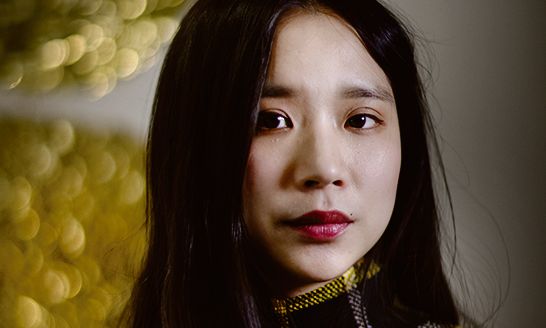Portrait of Lap-See Lam
Photo: © Beatrice Lundborg, Dagens Nyheter
For her first solo exhibition in the US—Tales of the Altersea (until 27 August) at the Swiss Institute—the Stockholm-based artist Lap-See Lam has created an immersive video installation that uses imagery drawn from 3D scans she made of Western-style Chinese restaurants. Lam, whose parents operated a Chinese restaurant in Stockholm, uses this visual lexicon as an allegory for the immigrant experience as well as a backdrop upon which she weaves a moving, magical realist narrative.
The Art Newspaper: The narrative of this piece begins with the Sea Palace, an actual floating Chinese restaurant shaped like a dragon that sailed from Hong Kong to Europe before going out of business. Your parents ran a Chinese restaurant in Stockholm, right?
Lap-See Lam: Yes, my grandmother opened the restaurant when she moved from Hong Kong. First she moved to the UK, then to Sweden, where she became a chef at a Chinese restaurant before opening her own in the 1980s. It was because of that restaurant that she could bring her sisters and brothers from Hong Kong to Sweden, because they could all work there. She called it her school, because it’s where all of her family members got their education in how to run a Chinese restaurant, and almost all of them then opened their own restaurants throughout Sweden. My parents took over the restaurant that my grandmother opened, but they sold it in 2014, which in a way sparked this whole project that I’ve been doing all these years since.
Is this family and personal history the seed of your interest in exploring the aesthetic of the Westernised Chinese restaurant?
Definitely. I started the project because I had the idea of saving or archiving our space first, just for personal reasons. But the new owner wouldn’t let me 3D-scan it initially, so I started 3D-scanning other similar restaurants, and that grew into a larger project. A few years later I did get to 3D-scan the restaurant that my family owned, though. It started with that personal need to look into the space with a sort of distance.
Lap-See Lam, Tales of the Altersea, installation view, Portikus, Frankfurt am Main, 2023 Courtesy the artist and Galerie Nordenhake, Stockholm/Berlin/Mexiko City. Photo: Alwin Lay
3D-scanning is a very nice metaphor for changing that relationship, because you’re recreating the space but in a detached and emotionally cool way.
My first idea in scanning these spaces was to create these hyper-realistic images, but the scanning technique at the time wasn’t developed enough yet, so the materials I gathered were huge and my computer wasn’t able to handle it. That, in combination with the errors in the technology itself, created these faulty, glitchy images. My initial feeling was to correct it, but when I started to look at it, the material itself started to speak to all of these things—about fragments and memories. It was like a shipwreck of ideas and cultural symbols that were slowly disappearing, and it was like the material itself could invoke all these ideas. It became more like an after-image of the Hong Kong diaspora in Sweden, and that created a new space for me to work with.
I’m also curious about this decision to present the work in a manner that surrounds the viewer.
There’s an openness and a directness to the immersive quality of the work. I’m interested in the idea of spatial history, so when I make these works I’m recreating these spaces but I’m not duplicating them, I’m creating another realm of space and time. The immersiveness is really my attempt to affect the audience in a very direct way. There is a narrative to the works, but these stories usually come quite late for me in the process. I use these spaces and create these images as points that allow these stories and texts to grow; I can find it really hard to describe the work because a lot of these ideas get lost in translation and are hard to put into words, but creating these spaces through sound and images allows for something else to come up that’s not based on language in that traditional form.
I also want to ask about your use of a magical realist lens to tell this story, though when I think about the Sea Palace, for example, I can see how that kind of framework is a logical extension of the work.
The Western Chinese restaurant is a magical realist place in a way. I find them fascinating because they have this duality to them—they are like dream images of something perceived as Chinese, or a Chineseness, but at the same time it is a real functioning space which holds all of these often-hidden histories of family, migration, belonging and dreams. I work with that kind of duality a lot.

